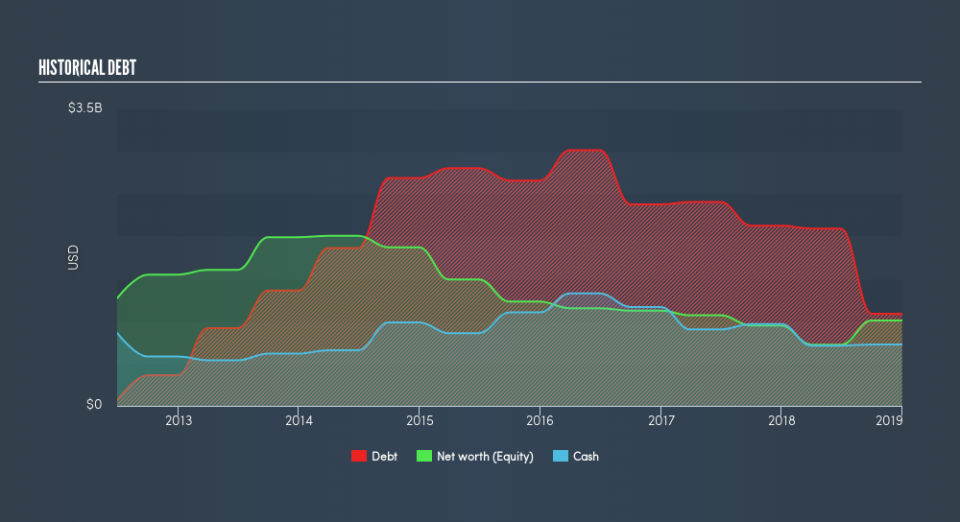Does Petrofac Limited's (LON:PFC) Debt Level Pose A Problem?

Small-caps and large-caps are wildly popular among investors; however, mid-cap stocks, such as Petrofac Limited (LON:PFC) with a market-capitalization of UK£1.6b, rarely draw their attention. Despite this, commonly overlooked mid-caps have historically produced better risk-adjusted returns than their small and large-cap counterparts. Let’s take a look at PFC’s debt concentration and assess their financial liquidity to get an idea of their ability to fund strategic acquisitions and grow through cyclical pressures. Note that this information is centred entirely on financial health and is a top-level understanding, so I encourage you to look further into PFC here.
Check out our latest analysis for Petrofac
PFC’s Debt (And Cash Flows)
PFC's debt levels have fallen from US$2.1b to US$1.1b over the last 12 months , which also accounts for long term debt. With this debt payback, the current cash and short-term investment levels stands at US$726m to keep the business going. Moreover, PFC has generated cash from operations of US$484m over the same time period, leading to an operating cash to total debt ratio of 45%, meaning that PFC’s current level of operating cash is high enough to cover debt.
Can PFC pay its short-term liabilities?
At the current liabilities level of US$3.8b, it appears that the company has maintained a safe level of current assets to meet its obligations, with the current ratio last standing at 1.14x. The current ratio is the number you get when you divide current assets by current liabilities. Generally, for Energy Services companies, this is a reasonable ratio as there's enough of a cash buffer without holding too much capital in low return investments.
Does PFC face the risk of succumbing to its debt-load?
With total debt exceeding equity, PFC is considered a highly levered company. This is not unusual for mid-caps as debt tends to be a cheaper and faster source of funding for some businesses. We can test if PFC’s debt levels are sustainable by measuring interest payments against earnings of a company. Ideally, earnings before interest and tax (EBIT) should cover net interest by at least three times. For PFC, the ratio of 7.68x suggests that interest is appropriately covered, which means that lenders may be less hesitant to lend out more funding as PFC’s high interest coverage is seen as responsible and safe practice.
Next Steps:
Although PFC’s debt level is towards the higher end of the spectrum, its cash flow coverage seems adequate to meet obligations which means its debt is being efficiently utilised. Since there is also no concerns around PFC's liquidity needs, this may be its optimal capital structure for the time being. I admit this is a fairly basic analysis for PFC's financial health. Other important fundamentals need to be considered alongside. You should continue to research Petrofac to get a more holistic view of the mid-cap by looking at:
Future Outlook: What are well-informed industry analysts predicting for PFC’s future growth? Take a look at our free research report of analyst consensus for PFC’s outlook.
Valuation: What is PFC worth today? Is the stock undervalued, even when its growth outlook is factored into its intrinsic value? The intrinsic value infographic in our free research report helps visualize whether PFC is currently mispriced by the market.
Other High-Performing Stocks: Are there other stocks that provide better prospects with proven track records? Explore our free list of these great stocks here.
We aim to bring you long-term focused research analysis driven by fundamental data. Note that our analysis may not factor in the latest price-sensitive company announcements or qualitative material.
If you spot an error that warrants correction, please contact the editor at editorial-team@simplywallst.com. This article by Simply Wall St is general in nature. It does not constitute a recommendation to buy or sell any stock, and does not take account of your objectives, or your financial situation. Simply Wall St has no position in the stocks mentioned. Thank you for reading.


